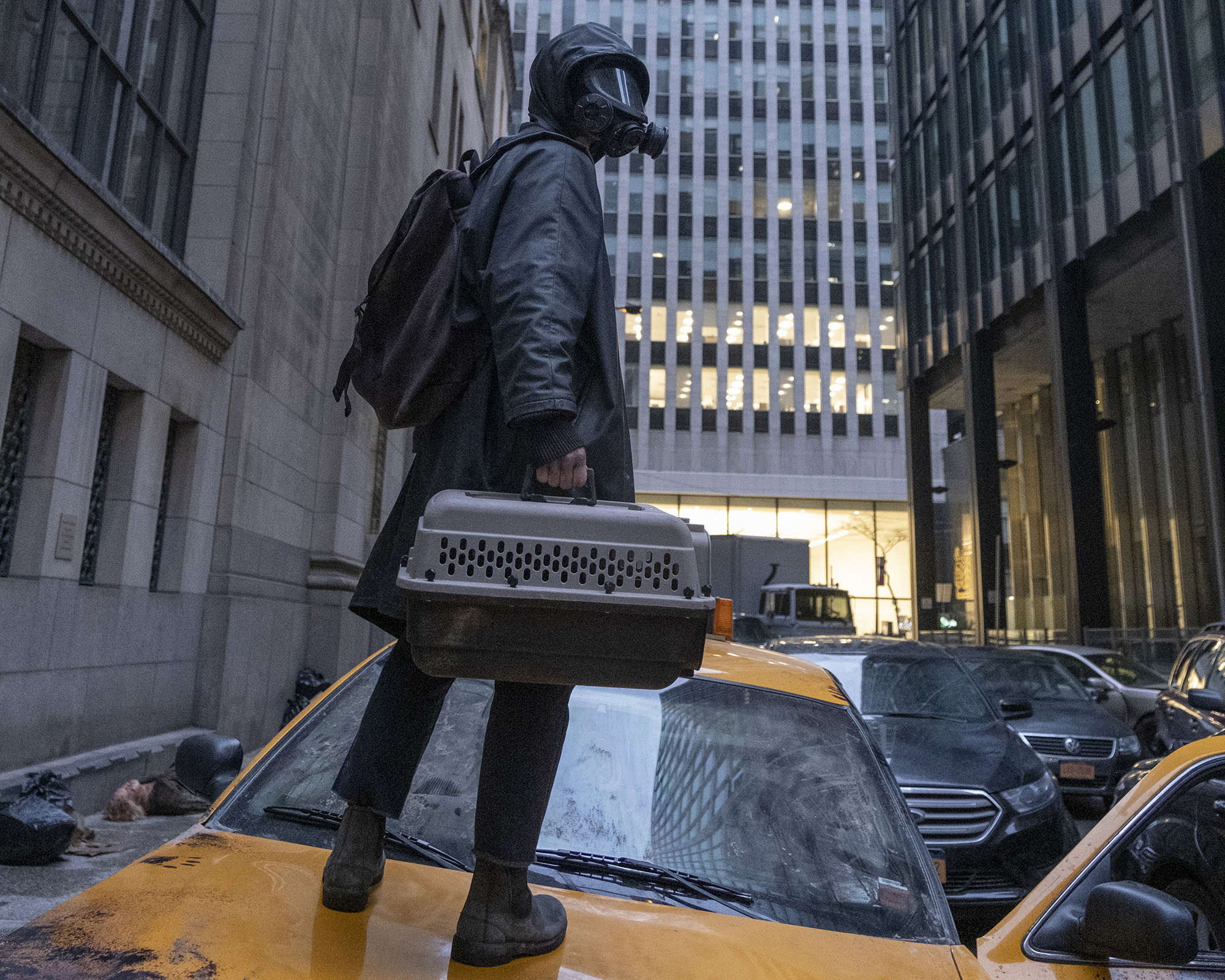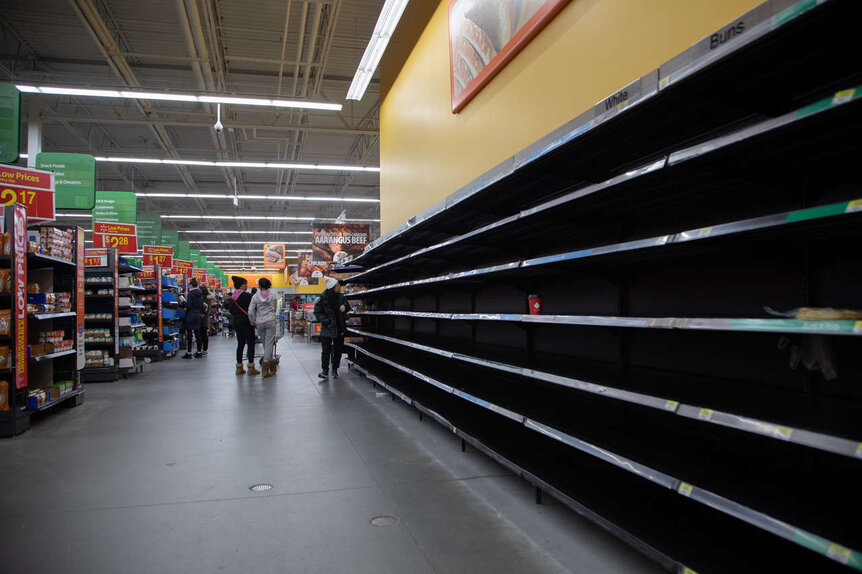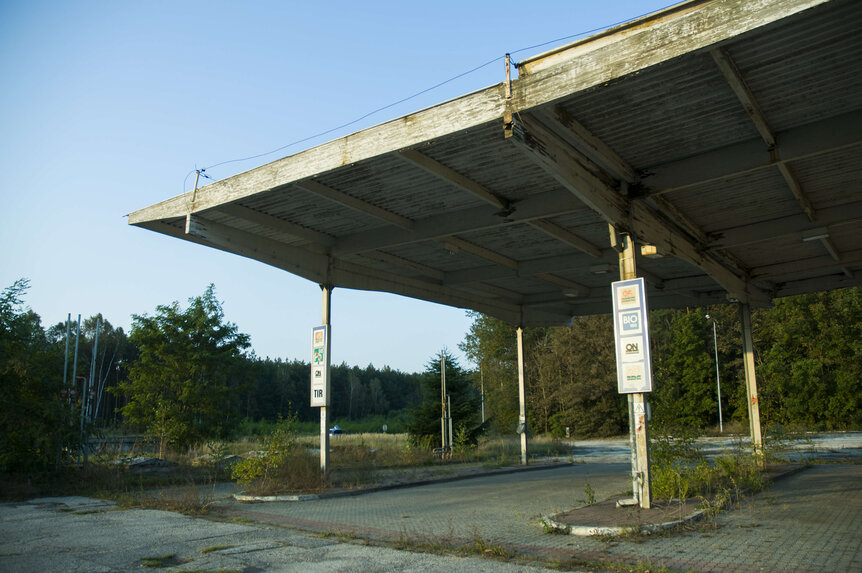Create a free profile to get unlimited access to exclusive videos, sweepstakes, and more!
A countdown to the collapse of civilization? The science behind 'Y: The Last Man'

Based on the comic book of the same name, created by Brian K. Vaughan and Pia Guerra, Y: The Last Man, a new show from FX on Hulu, tells the story of Yorick Brown and his capuchin sidekick, Ampersand.
Its central premise involves an unknown (at least at the start) biological catastrophe that kills every animal on Earth with a Y chromosome — except for the previously stated duo. Yorick and every other living human are tasked with surviving and rebuilding in this radically different world.
In the season’s second episode, what remains of the United States government frantically attempts to evacuate New York City before it’s overrun by rising water. Power grids are failing. Resources are scarce. All of this happens in approximately two months from the day of the event. It's enough to make you wonder how long would it really take for our infrastructure to collapse without the sorts of regular maintenance it’s used to?
GROCERY STORES
In the aftermath of a truly catastrophic event, food and other items on grocery store shelves will be one of the first things to go. We all likely experienced this to a small degree last year. Remember the toilet paper shortage? Toilet paper, funnily enough, may not be the sort of thing you should need to make a run for during a disaster. It has a long shelf life. Food, on the other hand, would run out pretty quickly.
Because food, particularly perishables like bread and milk, have a limited shelf-life groceries only stock as much of it as they think they can sell before the best-by date. Inventory turnover is a measured metric of grocery store success. Foodstuffs that go unsold before they spoil equate to lost revenue, so grocers take great pains to make sure that doesn’t happen.
Take a look at the milk bottles the next time you’re at the store, find the bottle with the latest expiration date and recognize that if the supply chains broke down, that’s probably the last possible date you’re getting a jug of milk. And that’s supposing people don’t panic buy and empty the shelves on day one. Given what we know of ourselves, an unlikely scenario.
Non-perishables like canned and jarred goods might last a little longer. They’re plentiful and they’re stable over extended periods. Grocers might stock them more plentifully by virtue of their longer lifespan, but they suffer from the same supply issues as anything else.
The Campbell’s soup factory in Camden, New Jersey, produces at least a billion cans of soup a year. It is one of six factories Campbell’s operates. That’s a lot of soup. If we assume the other five factories make the same amount, it comes out to about 16.5 million cans of soup produced each day, just to keep the shelves stocked. There are, of course, other canned-good manufacturers but you get the picture. There are about 38,000 grocery stores in the United States. If all six of those factories produce soup only for stores in the U.S., they can each receive about 430 cans per day.
A dozen or so quick-acting shoppers would empty the shelves. The only hope for you ever getting a can of chicken and stars again, depends entirely on continued restocking and that requires trucks.
GAS AND ELECTRICITY
Drivers in the United States used approximately 338 million gallons of gasoline per day in 2020, and that was the lowest average consumption since 1997, when the population was roughly 20 percent smaller than it is today. Peak usage occurred in 2018, at 392 million gallons per day. That demand equates to approximately 20 million barrels of oil every single day. Our production, however, is just shy of 15 million barrels. In terms of domestic production and consumption, we’re running at a daily deficit, and that’s without the added complication of a global disaster.
The good news, for those of us who survive, is the United States holds in reserve more than 35 billion barrels, enough to maintain daily consumption for almost five years. And, with half the population gone, we’ll call it ten. Considering roads will be gridlocked and there will be fewer places worth traveling to, owing to all the corpses and the general decline of civilization, the United States’ oil reserves could last for a good long while.
Still, there’s the trouble of refining that oil and transporting it around the country. As of January of this year, there were 129 refineries in the United States, and they’re not evenly distributed across the states. Depending on where you live, getting your hands on gasoline may be next to impossible, no matter how many barrels are waiting to be burned.
The more pressing concern, however, is that of electricity. With the exception of rare and usually brief outages, we’ve all grown accustomed to consistent access to electricity, day in and day out. We rely on that power to store and cook food, for environmental controls in hot or cold months, and to keep the lights on at night. Not to mention more critical uses of power, like keeping life-saving machinery online and maintaining lines of communication.
The consistent availability of electricity is the result of constant maintenance across multiple sources for a given area. Individual power plants go down all the time, either for planned maintenance or an unplanned shutdown, but alternate sites pick up the slack. The power-using consumer rarely notices.
However, while fuel shortages will impact your ability to travel, they’ll also impact the grid.
As of 2020, roughly 60 percent of electricity generation came from natural gas and coal. Power plants burn fossil fuels to run steam turbines, and without reliable refueling, they’ll shut down. In the Y: The Last Man episode, they discuss dwindling coal reserves on day 63, which is wildly inaccurate. The United States' coal reserves are sufficient to maintain current demand for more than 300 years. Of course, like gasoline, that's dependent on getting it where it needs to be. The major challenge is not the availability of resources, but their distribution.
The remainder of our power generation comes from nuclear and renewable sources. Those plants could potentially keep going for a while, the wind and the sun come to us wherever we are, but even those plants require regular maintenance.
Provided there are no additional catastrophes, a nuclear plant could conceivably keep running for a couple of years. They refuel roughly every 18 to 24 months. But the strain on the overall grid arising from the failure of most power sources would make electricity spotty at best.
PROGNOSIS
These are just some of the largest failure points which might occur rapidly at the onset of an apocalyptic event. Of course, there are other concerns — availability of medication or treatment in the event of injury or illness, water purification — in truth, the collapse of civilization would likely happen in a matter of days, not weeks or months.
Still, once the dust settles, there may not be cause for too much panic. Human beings tend to rally around one another in times of crisis. We survived in a world without electricity and global commerce before, and without the benefit of everything we’ve learned. It would be hard, but the survivors of Y: The Last Man would make it through, provided they figure out how to have a next generation.




























